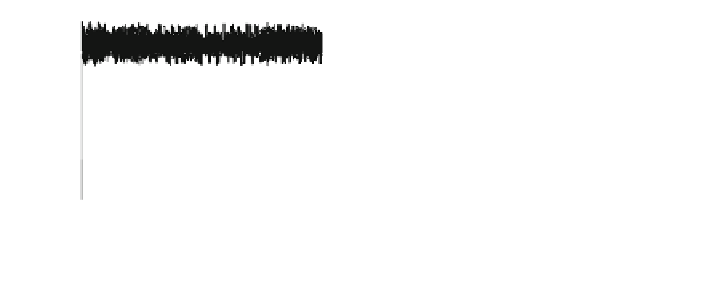Environmental Engineering Reference
In-Depth Information
45
5000
4800
40
4600
K
=1.5e5
Baseline
K
=1.5e5
Baseline
α
α
4400
35
0
200
400
600
0
200
400
600
time (s)
time (s)
Fig. 15.4
Power output (left) and torque control (right)
1500
1400
15
1300
10
1200
1100
5
K
=1.5e5
Baseline
K
=1.5e5
Baseline
α
α
1000
0
0
200
400
600
0
200
400
600
time (s)
time (s)
Fig. 15.5
Pitch angle (left) and generator speed (right)
measurement of all pitch angles. In particular, the actuator is stuck to 0 degrees at
the beginning of the computation then after 50 s it gets unstuck and then each
period of 75 s we switch between being stuck/unstuck. We modeled this fault
using the following ordinary differential equation:
b
3
¼
p
b
3
þ
b
1
ð
Þ
where p is a pulse generator of amplitude 10, period 150 s, pulse width (% of
period) 50, and a phase delay of 50 s. When p equals 0 the third actuator is stuck
and when p equals 10 then b
3
follows again the pitch control, b
1
. Initially, the third
actuator is stuck to 0. The simulation results for the faulty case show that:
• The first blade pitch angle is always within the authorized variation domain, as
shown in Fig.
15.6
(left), but with higher oscillations for the baseline con-
troller. Thus, our proposed controller induces less vibrations in the structure as
the range of movement of the pitch angle is smaller.
• The third blade switches between being stuck/unstuck as can be seen in
Fig.
15.6
(right).
• The transient response of the electrical power has a larger oscillation for the
baseline controller, as shown in Fig.
15.7
(left).

























































































